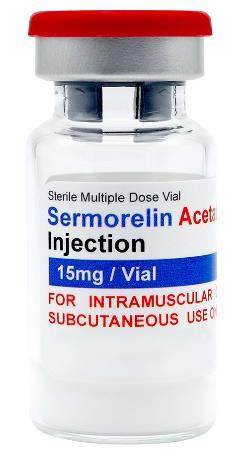Sermorelin and IGF-1: Q&A with Dr Richard F. Walker
Jasen Bruce
Feb 19, 2018

When supplementing with GhRh (Sermorelin) or GH secretagogues, what is the target level of IGF-1?
There are no specific "goals" for serum IGF-1. Those are the purview of the treating physician. They are also affected by differential feedback strengths that are unique to each patient. The Endocrine Society has published recommendations to achieve levels that are within the sex and age adjusted reference for the patient. However, these decline with advancing age and thus, are adjusted downward. Like hGH, IGF-1 clinical references ranges only reflect those of healthy men and women at different ages, not necessarily "optimal" levels to meet doctor/patient objectives in terms of targeting body composition, especially increased lean body mass and reduced fat mass. Nonetheless, the "normal" ranges also do not limit those that can be achieved using secretagogues such as sermorelin. Higher values can be achieved by administering higher doses or increasing administration frequency of the peptide, and also improving nutritionals status since poor nutrition is associated with lower IGF-1 levels. Thus, the "goal" level for IGF-1 is not the same for all people, nor if the target level is relatively high, may not be achievable due to feedback strength previously mentioned. Don't forget that unlike recombinant hGH which affects liver, bone and muscle directly and thereby can drive supra-physiological levels of IGF-1, sermorelin is affected by negative feedback from the growth hormone that it stimulates from the pituitary gland. Thus, if the doctor wishes to restore "youthful" levels of IGF-1 (clinical upper reference range for males and females between the ages of 30 - 50 years), he/she should prescribe sufficient sermorelin to achieve levels in men between 220 and 255 ng/ml, and for women between 249 - 291 ng/ml. Below are the reference ranges for adults.
What IGF-1 level is considered 'too high' when administering Sermorelin?
As I previously mentioned, negative feedback at some point will limit the amount of growth hormone that can be released from the pituitary by sermorelin. This level will differ among individuals of different ages and different nutritional statuses. However, this may be a positive factor since very high levels of IGF-1 have been reported to increase the risk of various cancers (prostate, colorectal, etc) and heart disease. Thus, again depending upon age and nutritional status of the patient, I would suggest not chronically exceeding IGF-1 levels of >350 ng/m. It is my opinion that levels about 400 ng/ml should definitely be avoided due at least to the increased cancer risk that may result.
REF: William J Cromlie: Harvard Gazette, April 22, 1999, News and Announcements (Growth Factor Raises Cancer Risk Growth Factor Raises Cancer RiskApril 22, 1999
Source of information:
Richard F. Walker, Ph.D, R.Ph received a BS in pharmacy from Rutgers University, a MS in Biochemistry from New Mexico State University and a PhD in a physiology from Rutgers University. He completed an internship in neuroanatomy at Emory University College of Medicine, and postdoctoral fellowships in neuroendocrinology and neuropharmacology at Duke University College of Medicine (Center for the Study of Aging and Human Development) and the University of California, Berkeley, respectively.